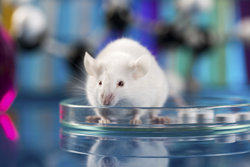Evolutionary drivers of gene expression
The genetic code dictates which genes we inherit, but regulatory elements control the time and instance of gene expression. Central to gene regulation are transcription factors (TFs), proteins that bind adjacent to genes and help gene transcription. Although each TF recognises a particular DNA sequence, it is unclear how they choose to bind only a fraction of these sites at any given time. Unveiling the mechanistic determinants of these choices could help comprehend how we evolve to be different. To achieve this, scientists of the EU-funded 'Globally connecting single nucleotide variations to transcriptional regulation in vivo' (SNPS AND TF BINDING) project investigated how the genetic sequence in non-coding parts of the genome could correlate to phenotypic differences in closely related species. For this purpose, they used mouse strains to identify over 50 000 binding sites throughout the genome of liver cells for 3 specific TFs (CEBPa, HNF4a and FoxA1). Sequencing of these sites determined not only the binding locations for each TF, but the intensity of the binding as well. Researchers observed alterations in both the physical location and the binding intensity for all three TFs. Although, in part, this could be due to changes in the genetic sequence, it was a strong indicator of evolutionary divergence in TF binding. To experimentally test if changes in TF binding affect the whole cluster of TFs for a particular gene, scientists used a transgenic mouse model missing an important TF for liver development and function (CEBPa). No profound changes in the binding of other TFs were seen, probably due to compensation by similar TFs. Overall, the data obtained during the SNPS AND TF BINDING study support the notion that although gene function and expression are evolutionarily conserved, most TF binding events are species-specific. This information brings us a step closer to understanding the origin and driving forces behind phenotypic diversity.







